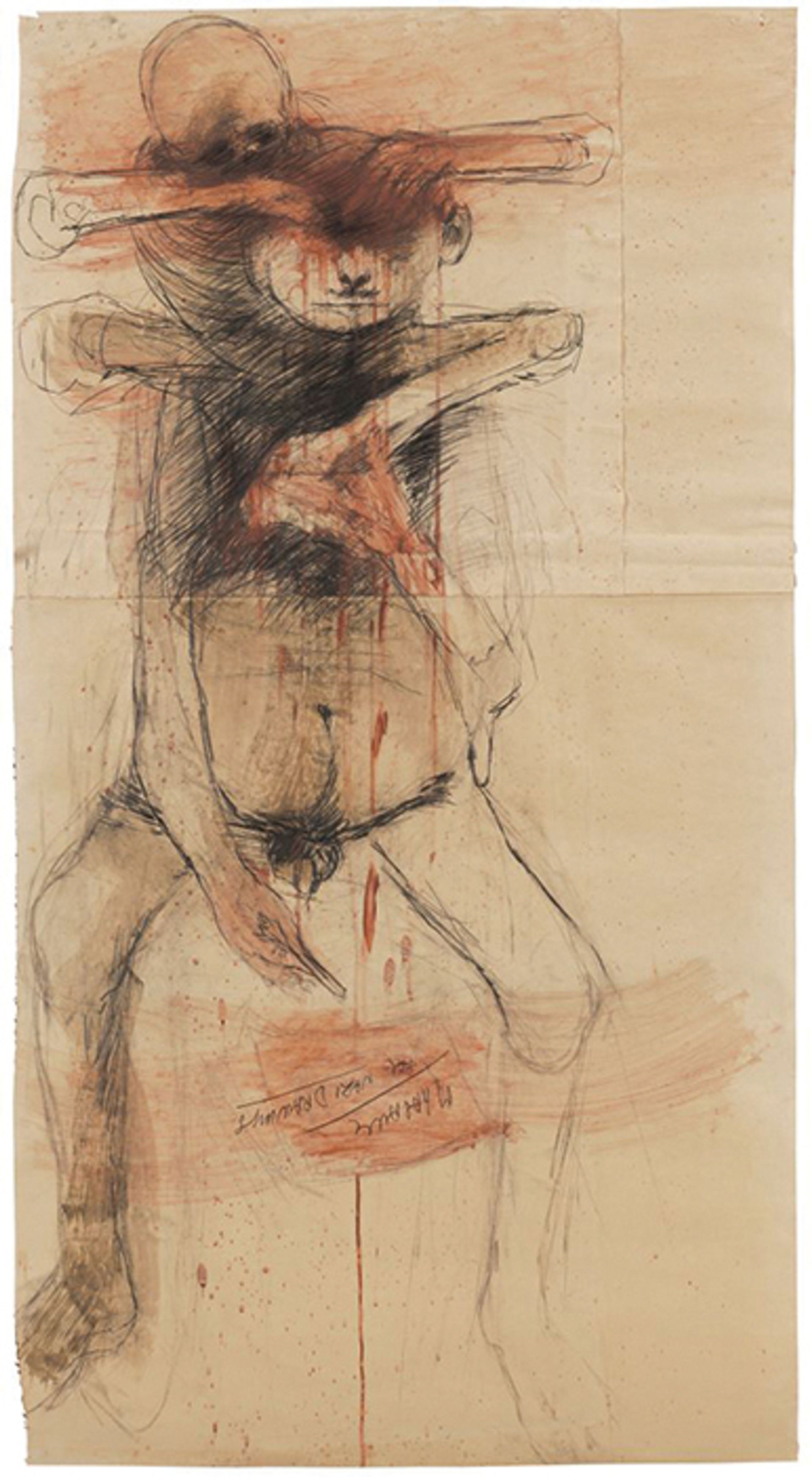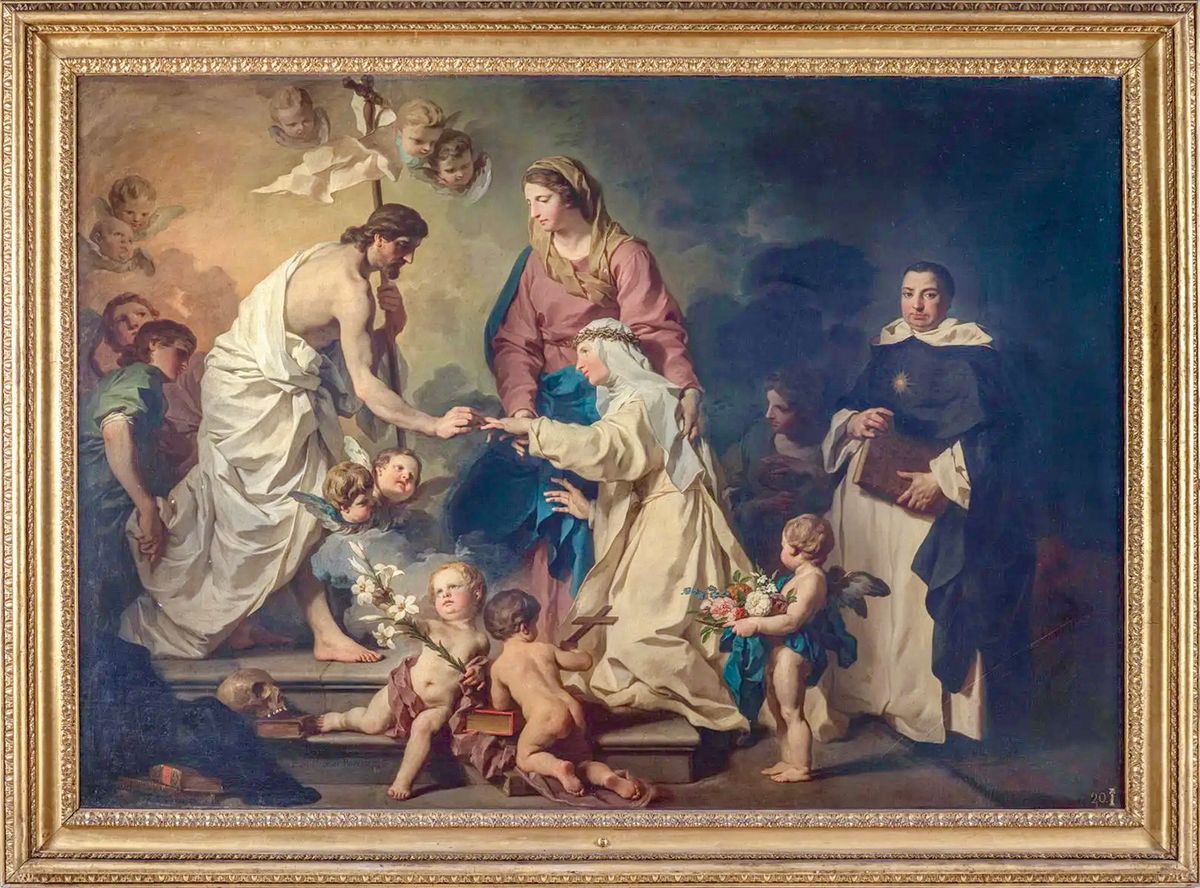Pierre Subleyras’s The Mystical Marriage of St Catherine de’ Ricci (1746)
Gallerie degli Uffizi, Florence
In 1746, Pope Benedict XIV canonised five new saints in a ceremony at St Peter’s Basilica in Rome, commissioning large paintings to depict their memorable deeds. The French painter Pierre Subleyras won two commissions, including The Mystical Marriage of St Catherine de’ Ricci, showing the Dominican nun’s vision of Jesus giving her a ring on Easter Sunday. The painting was later given to Cardinal Girolamo Colonna di Sciarra and passed down through the Colonna family until 1935, when it was acquired by the Florentine Sacchetti family.

Mauricio Lasansky’s The Nazi Drawings (1961-71) Photo: Minneapolis Institute of Art/Lasansky Corporation Gallery; © Lasansky Corporation Gallery
Mauricio Lasansky’s The Nazi Drawings (1961-71)
National Gallery of Art, Washington, DC
“I was full of hate, poison, and I wanted to spit it out,” said Lasansky of his 33 drawings on the horrors of the Holocaust. The son of Lithuanian Jewish immigrants in Argentina, he began the series in 1961, when the Nazi official Adolf Eichmann went on trial for war crimes in Israel and the testimonies of Holocaust survivors were broadcast to the world. He worked for six years on the initial group of 30 drawings, filled with skulls, skeletons and tortured bodies at life-size or larger. While the drawings were on tour in 1967-70, he also created an enormous collage triptych.

kith and kin (2024) by Archie Moore Photo: Andrea Rossetti; © the artist; courtesy of the artist and The Commercial
Archie Moore’s kith and kin (2024)
Queensland Art Gallery | Gallery of Modern Art, Brisbane and Tate, London
Moore won the Golden Lion at the 2024 Venice Biennale for kith and kin, his Australia Pavilion installation on Aboriginal kinship and colonial trauma. With Kamilaroi-Bigambul ancestry on his mother’s side and British-Scottish on his father’s, Moore created a family tree spanning 2,400 generations and 65,000 years. The vast drawing surrounds a memorial for First Nations people who have died in Australian state custody.


